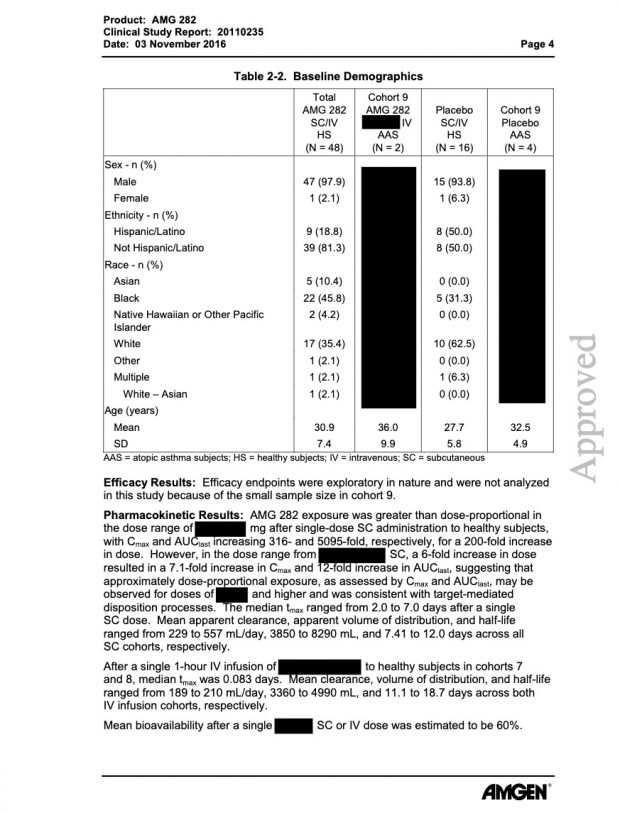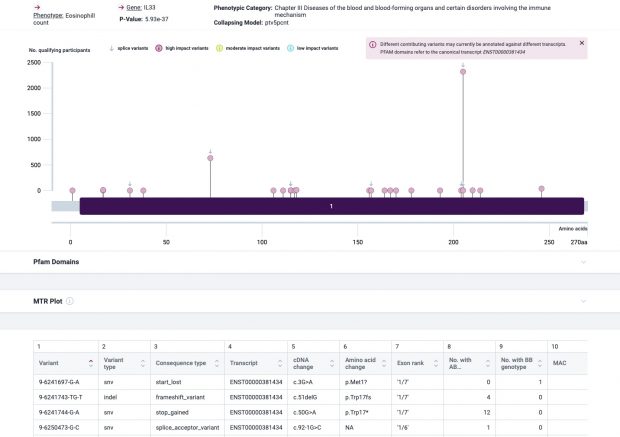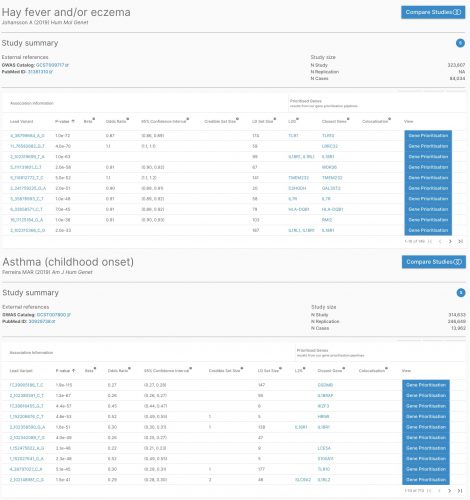the AMGEN website …
Category Archives: Allergy
Ausfahrt freihalten
Da wird von Leuten „Freiheit“ eingefordert, die zugleich proklamieren, alle, die nicht ihrer Meinung wären, gehörten an die Wand gestellt. Die gleichen Leute haben kein Problem damit, Schutzsuchenden den Grenzübertritt zu verwehren und sie erfrieren oder ertrinken zu lassen.
Statt eines weiteren Essays zur Perversion des Freiheitsbegriffes damals und heute hier ein Bild ohne Worte.
Rare variants in GSDMA/B /IKZF3 but not in ORMDL3 are relevant for asthma
It was a heated debate (paper, blog) that was open until a most recent study that I am depicting here in more detail.
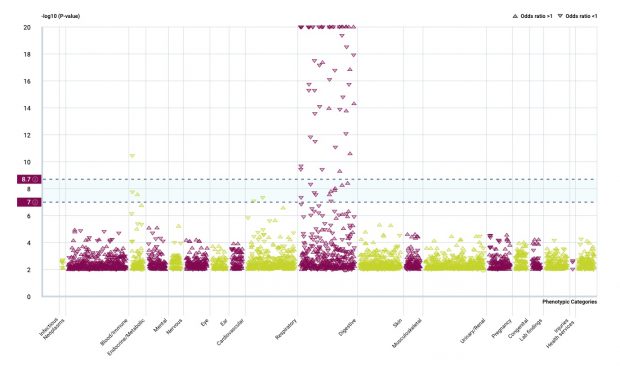
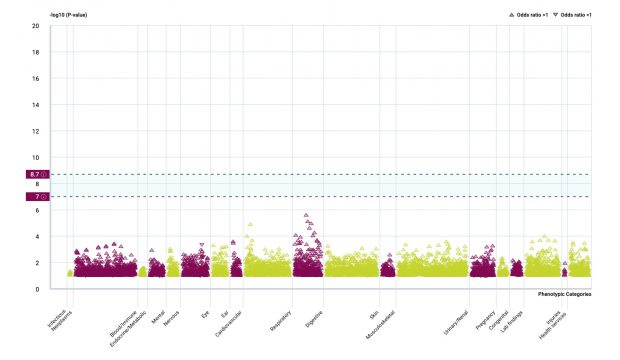
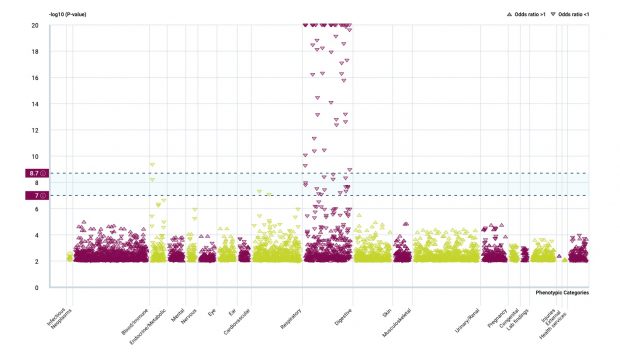
Maybe there is an interaction by methylation?
The analysis of SNP effects is ongoing while it now looks like ORMDL3 SNPs were just hitchhikers, at least what I see.
Addendum 4.9.2023
Maybe there is even a vitamin interaction?
Wer glaubt, durch eine Infektion sein Immunsystem zu trainieren…
Nachdem ich viele Jahre damit verbracht habe die Hygiene Hypothese der Allergien zu widerlegen, dass
die „Auseinandersetzung“ des kindlichen Organismus mit Schmutz und Keimen [ist ]eine wichtige Voraussetzung für eine normale Entwicklung des Immunsystems ist … Gründliche oder sogar übertriebene Hygiene führt nach dieser Theorie dazu, dass das Immunsystem nur eingeschränkt aktiviert wird. Es ist dadurch „unterbeschäftigt“ und tobt sich quasi mit der Ausbildung allergischer Erkrankungen aus.
bin ich dem prominenten Beistand nun doch sehr dankbar für seine Aussage
Bonuslinks
Merchandising (fun)
*** Artikel (englisch)
*** Blog (deutsch)
19.12.2023 Update
Warum hinter “Immunschuld” ein Missverständnis steckt
Nachholeffekte Grund für viele Ansteckungen
Back to the roots
Rewriting a local Python notebook now to Colabs (as I don’t have an eGPU and therefore also no CUDA support in macOS) I am now again restricted by a daily timeout…
This reminds me so much back to 1989/1990 when we programmed SAS on an IBM mainframe under VM/CMS. I usually went there early in the morning just to reserve my disk space :-) In the evening it was all gone just like Colabs nowadays…
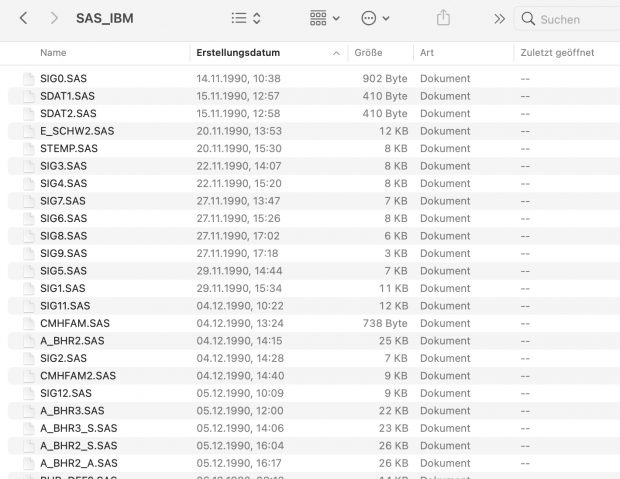
*** * Auswertung des genetischen Einflusses...; cms fi data disk dummy dummy e; data a; set data.ges_crit(keep= asthma frage f1ekzem f33heu f36ekzem); ***
BTW without an expensive GPU I had to use our HPC now. Will try a Jetson Nano or Google Coral in the near future as this seems to be more energy friendly.
Max Planck über Religion, Ethik und Naturwissenschaft
IV
… im gesamten Bereich der Natur ,…, eine bestimmte Gesetzlichkeit herrscht, welche unabhängig ist von der Existenz einer denkenden Menschheit, welche aber doch, soweit sie überhaupt von unseren Sinnen erfaßt werden kann, eine Formulierung zuläßt, die einen zweckmäßigen Handeln entspricht…
V
… So sind aIle Fragen der Ethik der Naturwissenschaft fremd, ebenso wie andererseits die Größe der universellen Naturkonstanten für die Religion ohne jede Bedeutung ist. Dagegen begegnen sich Religion und Naturwissenschaft in der Frage nach der Existenz und nach dem Wesen einer höchsten über die Welt regierenden Macht, und hier werden die Antworten, die sie beide darauf geben, wenigstens bis zu einem gewissen Grade miteinander vergleichbar…
Wohin und wie weit wir also blicken mögen, zwischen Religion und Naturwissenschaft finden wir nirgends einen Widerspruch, wohl aber gerade in den entscheidenden Punkten volle Übereinstimmung
“Religion und Naturwissenschaft”. Vortrag, gehalten im Baltikum im Mai 1937
Epidemiological modelling at the next level
I have done epidemiological modeling for a long time in SAS and R. cleaning the data and building an appropriate statistical model. In practice there were basically two choices either logistic or linear regression, maybe in subgroups and defined intervals, with more or less variables depending on experience or preference ( occasionally also a Loess smoother for a clearer picture). Maybe I learned about R^2 and AIC while writing this paper. Yes, I always looked at residuals but my capability in judging model capability was limited both from theoretical and practical aspects.
When working now on an image analysis project to Python, I found it stunning what the library PyCaret can do.
One line of code and we have trained and evaluated over 20 models using cross-validation. The scoring grid printed above highlights the highest performing metric for comparison purposes only. The grid by default is sorted using
R2(highest to lowest) which can be changed by passingsortparameter. For example,compare_models(sort = 'RMSLE')will sort the grid by RMSLE (lower to higher since lower is better).
I am now thinking to repeat some earlier analysis — just to see if I really did the best choice when writing my latitude paper back in 2005. It was one of the largest studies at that time.
conda create --name regression python=3.7.11 conda activate regression pip install pycaret pyreadr conda deactivate
TBC
How atopic dermatitis is linked to vitamin D and how IL33 splice variants associate to eosinophil numbers
(first published 12 Dec2020 and revised 10Dec2021)
We had a major discussion right before our 2010 paper where I argued that rare variants should have been included into our asthma/allergy/dermatitis GWAS. Ten years after there is now a nice paper using massive exome sequencing that finally includes them.
It seems that the respiratory tract isn’t so much influenced by rare gene variants but that there is a strong effect in the immune system.
And there is another interesting fact.
…Surveying the contribution of rare variants to the genetic architecture of human disease through exome sequencing of 177,882 UK Biobank participants …if we look at the …. European population who are carriers of a filaggrin (FLG) PTV, we find those carriers have significantly higher risk for well-known associations, such as dermatitis … and asthma … Concomitant increases in vitamin D levels suggest … increased sensitivity to ultraviolet B radiation.
So far, I have only assumed an asthma/allergy priming effect of oral vitamin D in the newborn gut. This paper now argues for an increased vitamin D sensitivity also in the skin of FLG dermatitis patients which is interesting given the largely contradictory data of serum vitamin D and atopic dermatitis. Maybe dermatologists should focus their research more on skin and local vitamin D turnover?
-II-
The most prominent IL33 variant carried by over 2,300 people is splice acceptor 9-6250473-G-C followed by 600+ individuals with splice donor 9-6250600-G-T.
There are not too many carriers of this variant by the sheer amount of 177,882 participants. We nevertheless know already something about the seven IL33 splice variants since 2012.
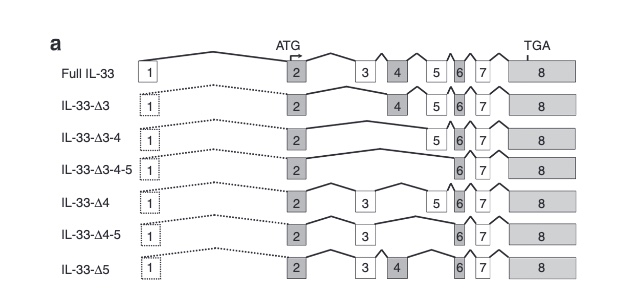
with updates in 2016

as well as in 2017
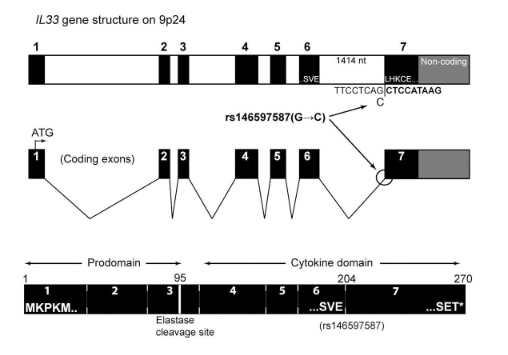
So I did a sequence match to compare the new finding with these older publications.

Indeed, the 2017 paper already described rs146597587 which is probably identical to the splice acceptor 9-6250473-G-C in Astra UK Phewas (genome positions do not match – I used hg19 while I don’t know the Astra reference) . Astra says also c.613-1G>C while rs146597587 is just upfront of my codon 205 (3*205=615) whatever that means.
The Astra UK Phewas at least confirms the Iceland paper above
rs146597587-C associates with lower eosinophil counts (ß= -0.21 SD, P = 2.5×10-16, N = 103,104), and reduced risk of asthma in Europeans (OR = 0.47; 95%CI: 0.32, 0.70, P = 1.8×10-4, N cases = 6,465, N controls = 302,977). Heterozygotes have about 40% lower total IL33 mRNA expression than non-carriers and allele-specific analysis based on RNA sequencing and phased genotypes shows that only 20% of the total expression is from the mutated chromosome. In half of those transcripts the mutation causes retention of the last intron, predicted to result in a premature stop codon that leads to truncation of 66 amino acids.
So it is basically a rediscovery meaning that we reached saturation.
Datenschutz
Zitat aus einem Interview mit Claus-Dieter Heidecke (IQTIG)
Wie bewerten Sie die Rolle des Datenschutzes in Deutschland?
Der Datenschutz hat natürlich absolut seine Berechtigung. Aber er muss sich stets an den Interessen der Patientinnen und Patienten orientieren und nicht an sich selbst. Beim Implantateregister, zum Beispiel, hat der Datenschutz dazu geführt, dass man die eingetragenen Daten nicht mit Daten der Qualitätssicherung verknüpfen kann. Jetzt kann man zwar Patienten identifizieren, denen ein fehlerhaftes Implantat eingesetzt wurde, man kann die Daten aber nicht für die Qualitätssicherung auswerten. Das halte ich für eine Fehlkonstruktion.
Genauso ist es mit dem DIVI Register. Obwohl ich das Register damals dem RKI vorgeschlagen hatte, konnte ich hinterher trotz mehrfacher Anfrage die Daten nie zu einer Auswertung haben.
Auch so eine Fehlkonstruktion die im Gegensatz zu Knieimplantaten aber vielen Menschen das Leben gekostet hat.
Deutsche Behörden sind nicht gut im Problemlösen aber sehr gut im sturen Anwenden von Regeln.
Vitamin D traces in later life
This is basically an update of my 2017 Allergy paper where I asked about sequelae of early vitamin D supplementation.
Two extensively examined hypotheses are the hygiene hypothesis (lack of protective bacterial exposure which leads to subsequent allergy) and the vitamin D hypothesis (early vitamin D supplementation sensitizes newborns against allergens) … The interesting question is: Are these concepts exclusive? … There is some preliminary evidence that – like many other environmental factors –vitamin D may modify the human microbiome.
Only yesterday a paper popped up during a presentation of Amelie Baud about the influence of social partners and the gut microbiome. This 2018 study tested gut microbial composition from 16S rRNA sequencing during the first year of life and subsequent risk of asthma in 690 participants
1-year-old children with an immature microbial composition have an increased risk of asthma at age 5 year … the microbial composition was not affected by maternal asthma status suggests that only susceptible children, exposed to inappropriate microbial stimulation during the first year of life, may express their inherited asthma risk …. The five most discriminating indicator OTUs for each cluster were identified for PAM cluster 1 as Enterobacteriaceae, Staphylococcus, Streptococcus, Bifidobacterium and Enterococcus, and for PAM cluster 2 as Faecalibacterium, Bacteroides(x3), and Anaerostipes … the risk of developing persistent asthma was increased (adjusted hazard ratio (aHR) 2.87 (1.25−6.55), P = 0.013) if the microbiome remained in PAM cluster 1 at age 1.
IMHO this doesn’t look very much like direct microbiome effects but some colliding factor. The authors discuss cesarean section-birth and antibiotics as relevant factors while I wonder why the last author (who is a known pro vitamin D lobbyist ) doesn’t take into account vitamin D here?
My 2017 review summarized only early results, where there are now many more robust studies like the 2019 Naderpoor study
there was a significant association between community composition and vitamin D supplementation at the genus level. The vitamin D group had a higher abundance of genus Lachnospira, and lower abundance of genus Blautia (linear discriminate analysis >3.0). Moreover, individuals with 25(OH)D >75 nmol/L had a higher abundance of genus Coprococcus and lower abundance of genus Ruminococcus compared to those with 25(OH)D <50 nmol/L.
or the 2020 Singh paper
Vitamin D supplementation significantly increased gut microbial diversity. Specifically, the Bacteroidetes to Firmicutes ratio increased, along with the abundance of the health-promoting probiotic taxa Akkermansia and Bifidobacterium. Significant variations in the two-dominant genera, Bacteroides and Prevotella, indicated a variation in enterotypes following supplementation.
So is the microbiome just an indicator of vitamin D exposure in genetic susceptible children?
Update on asthma and allergy genes
Even the most recent attempt by Open Targets integrating basically everything
GWAS Catalog and UK Biobank) with transcriptomic, proteomic and epigenomic data, including systematic disease–disease and disease–molecular trait colocalization results across 92 cell types and tissues … trained a machine-learning model … to distinguish causal genes from neighboring genes, outperforming a naive distance-based model
ended up with nothing new
I am glad to see, however, that my criticism of the ORMDL3 hype has been taken up by other authors as well
In the first report of the association of the 17q21 locus with asthma, Moffatt et al. suggested ORMDL3 as a promising candidate on the basis of gene expression studies in EBV-transformed lymphoblastoid cell lines 5. However, the function of ORMDL3 remains to be fully elucidated and it is possible that other genes in this region, or more distant genes, contain the true causal variants.
while ORMDL3 isn’t appearing at all in the above analysis. So ORMDL3 seems to suffer the same fate as FcER1b/MS4A2 identified by the same group.
Vitamin D Kids Asthma Study – Criticism is not justified
On Aug 12, Science magazine published a strange journalistic article about an ongoing vitamin D asthma study. I responded on the next day while also the former editor-in-chief of Science Jeremy Berg noted

Science Mag then printed also a longer rebuttal of Dr. Berg
Piller minimizes the rationale used to select the placebo-controlled trial design and suggests that there is agreement that such a design is unethical… The News story notes that the majority of children in the trial were Black and states that this constitutes overrepresentation… Rather than being criticized, this trial should be commended for inclusion of appropriate trial participants…. Piller writes that participants were at increased risk of fractures and that the nine bone fractures experienced by study participants were more than anticipated, without specifying the magnitude of any increased risk or the anticipated number of fractures. However, there is no consensus that any increased risk exists…
Piller misrepresents the Vitamin D Kids Asthma Study (“Vit-D-Kids” or “VDKA”) . He reports concerns about the study’s design, participant safety and selection, consent forms, and report trans-parency. These doubts are unfounded. VDKA ethically investigated a potentially important treatment for childhood asthma.
Unfortunately the concluding statement of the news editor Tim Appenzeller is so much out of this world that I would recommend to search now not only for another news correspondent but also another news editor.
Edit 18 Jan 2025
- Please read also the new Medium article by Dr Berg and the medRxiv article by Dr Celedon.
- For whatever reason the story surfaced again yesterday at Bluesky. For posteriority here is an unrolled thread with some interesting new details by Dr. Berg.
- Unfortunately some Twitter links expired recently but the links to the printed Science paper are still correct.
- This is one of the most unfair attacks of a dubious science journalist on a reputable scientist.
- I know Dr Celedon for several decades and although I never agreed on his opinion on high vitamin D demand in newborns, this discussion was always fair and on a high academic level.
- The motivation of Piller is unclear. Most likely and as we found with other stories he wants to establish himself as an investigative “Woodward-Bernstein style” reporter on the cost of his victims.
- The so called “ethics” experts of Piller missed the biological facts of vitamin D metabolism.
Vitamin D als Rattengift
Es gibt diverse Pro Vitamin D Webseiten, die den Gebrauch von Vitamin D als Rattengift (Rodentizid) bestreiten etwa das “Institut VitaminDelta, Dr. med. Raimund von Helden, Timmerschlade 14, 57368 Lennestadt” Zitat
… wurde ab 1984 wieder aufgegeben, weil die Ratten meist keinen Schaden nahmen.
Das ist Unsinn, Cholecalciferol wird sogar vermehrt wegen Resistenzen gegen Antikoagulantien eingesetzt. Fraßköder sind ab 2mg/kg wegen der Hypercalcämie auch für Haustiere wie Hund oder Katze tödlich.
When a scientific journal is modifying your images
The Journal of Allergy and Clinical Immunology (JACI) published numerous images that have been heavily modified. For Pubpeer examples see 1, 2, 3, 4, 5, 6, 7…
As I learned recently, this happened without the knowledge of the authors. As the duplications are always at the outer edges and originate from the same image, we assume that JACI publishing service inserted some cloned background” to insert”journal style” letter boxes.
Difficult to understand? Here is an example from the first reference.
JACI is known to ignore misconduct allegations while they are now slowly responding to post publication peer review.
…the duplications occurred when the publisher’s compositor vendor styled the figure panel label for print. The error did not impact the analysis, results, or conclusions of the article. The original figure appears below. The authors were not responsible for the error. Measures have been taken to prevent reoccurrence of this error for which the publisher accepts full responsibility and apologizes.
So photoshopping is no more allowed at the JACI office in Colorado– but who is accepting this “full responsibility”?
29 Aug 2021
